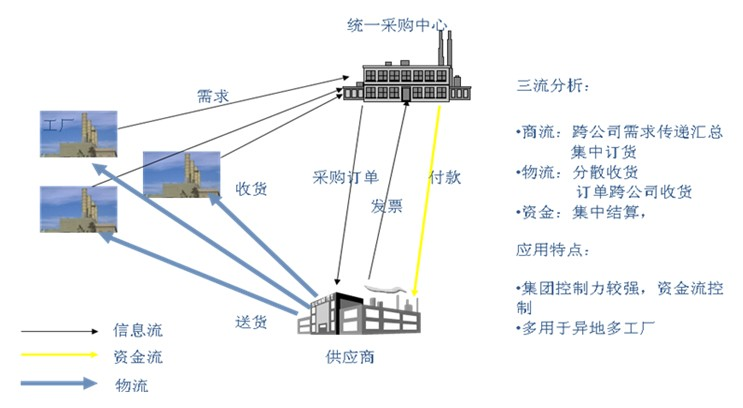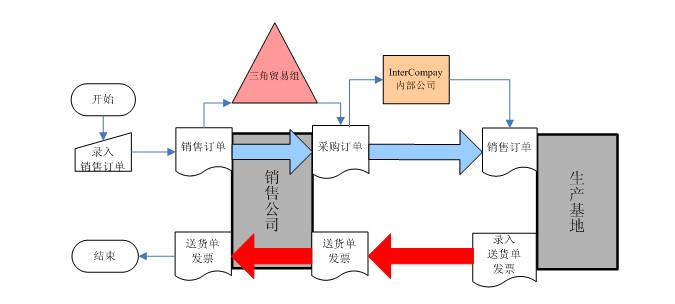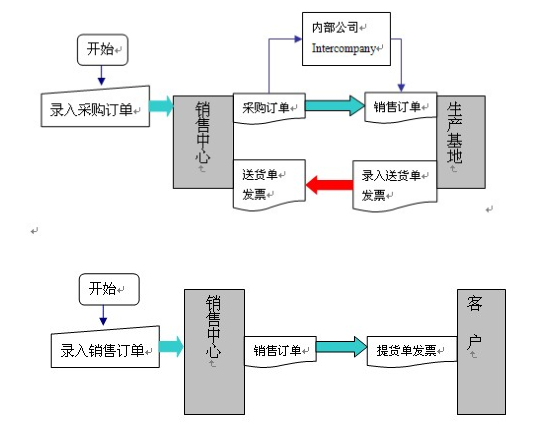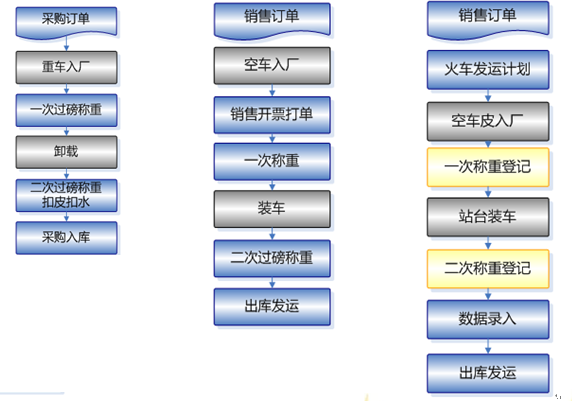祁连山水泥股份有限公司Microsoft Dynamics AX --ERP项目
行业:化工行业
2013年10月16日凌晨12点00分 | 3447
项目概述
客户资料
甘肃祁连山水泥集团股份有限公司是以国有大型骨干企业永登水泥厂为主体改制设立的上市公司,为甘肃省最大的水泥企业和西北地区特种水泥生产基地。目前集团辖六大生产基地、五个销售分公司、一个粉磨站、两个搅拌站,主要包括以永登、红古、青海省民和、天水武山、甘谷、平凉等6个生产基地;拉萨、西宁、天水、兰州、武威等5个销售分公司以及永固粉磨站、汉邦混凝土搅拌站多个分布在不同区域的子公司。水泥年生产能力为680万吨,商品混凝土年生产能力50万方。
项目背景
为进一步提升企业管理水平和综合竞争力,公司与微软(中国)有限公司、建筑材料工业信息中心签署了《共同开发微软水泥企业ERP解决方案合作框架协议》。决定基于微软DYNAMICS AX平台和建筑材料工业信息中心已开发的水泥企业ERP解决方案,研发一套适合水泥行业特点的企业资源计划(ERP)解决方案, 进一步强化内部控制、提高执行力,提升公司管理水平。
商业收益
地磅秤重管理、销售管理、发运管理、采购管理、三角贸易、应付管理、应收管理、库存管理、总账管理等功能模块,完成成本核算和系统核算。
客户赠言
“要加快推进ERP 建设进程,公司建设的ERP 管理系统已经取得阶段性成果,在此基础上进一步优化流程,尽快开发人力资源、办公自动化等模块,全面提升管理水平,微软ERP的成功实施意义非常重大,它把企业的人、财、物、产、供、销及相应的物流、信息流、资金流等紧密地集成起来,实现资源优化和共享,大大提升公司管理能力以及工作效率,大大提升企业的核心竞争能力,为祁连山水泥的未来的高速发展打下坚实的基础。”
——脱利成 祁连山水泥股份有限公司董事长
解决方案
祁集团采用Microsoft Dynamics AX的集团采购管理、集团内部三角贸易管理、地磅秤重管理、销售发运管理、应付管理、应收管理、库存管理、总账管理、资产管理等功能模块,完成成本核算和系统核算集团财务、内部公司交易等。
集团采购管理:
1. 采购模式:
A. 对于大宗原材料采购由集团统一招标进行采购,签订合同,根据各个基地年需求下达采购计划,而各个基地创建采购订单对供应商进行采购并独立结算;
B. 集团根据基地所提供的需求进行采购并且集采中心进行结算与付款,也就是说集团采购中心统一采购结算.

集团销售模式:
A. 集团销售中心向各个基地进行采购水泥产品,对最终客户进行销售。集团销售中心对生产基地进行采购结算,对客户进行销售结算,其中集团按一定比例扣除利润,在这期间产生两张销售订单与一张采购订单。

B. 集团销售公司首先通过公司间交易从生产基地采购,销售公司和生产基地进行内部结算;销售公司直接针对客户进行销售,对客户进行结算收款。如下两图所示:

优点:
内部交易自动处理、减少对账:随着水泥企业集团化发展的趋势不断强化,集团企业有大量的内部交易需要处理。水泥行业ERP系统能够实现内部交易的自动处理,节省大量的账务处理时间,提高财务人员工作效率,降低差错率;
地磅称重管理:
1. 汽车采购过磅流程 2. 汽车销售发运过磅流程 3. 火车销售发运过磅流程

支持功能:
• 车辆司机管理:车型,车号,载重量,注册载重量,司机基本档案等;
• 承运商管理;
• 与采购订单销售订单集成;
• 过磅数据补录功能;
• 非订单称重业务功能;
• 销售业务袋装水泥与散装水泥误差处理功能;
• 原燃料扣水功能;
• 授权数据更正功能;
• 原燃料进厂汇总表、明细表;
优点:
1) 水泥企业大宗原材料的采购与产品的销售发运是水泥企业的“两个门户”,管好两个门户,将极大减少企业可能发生的损失。另一方面,采用集成在ERP系统内的地磅管理子系统能减少信息孤岛的产生。
2) 实现称重系统与其他子系统的集成:称重子系统涉及的物料信息、产品信息、供应商信息、客户信息等基础信息无须单独维护,直接从基础主文件中读取;称重子系统的称重数量将作为采购入库、销售出库的实际数量,反应到采购/应付和销售/应收模块,无需二次录入。
3) 单位换算与误差校验:系统可以根据称重物料的换算关系,将称重物料的重量直接换算成其他单位。将袋装水泥的吨数直接换算水泥的袋数,方便仓库和财务的等相关部门的查询与核对。换算时考虑称重衡器的误差,设定超差范围,防止损失。
4) 与销售发运的紧密连接:水泥企业的产成品出厂,目前各企业大都要求过磅称重,这就要求称重系统能够与销售发运紧密连接。称重系统支持两种发运模式:一是车辆先称量皮重,再开提货单,装车后称量毛重;另一种情况为司机先开提货单,再称量皮重,装车称毛重。
5) 防作弊的功能:通过系统与红外线或视频监控等硬件系统的连接,实现多重防作弊的措施。
销售发运管理:
支持功能:
• 汽车、火车发运计划
• 信用额度管理
优点:
1) 发运管理和销售、称重管理模块整合设计,确保数据信息在一个系统内流转顺畅,杜绝系统外伪造或仿冒的提货单,避免企业损失。
2) 车辆档案管理:为了更好的管理车辆,并防止个别承运商改装车辆对企业造成损失,在系统中专门增加了车辆管理,对于新车会根据输入的车号自动保存车辆的相关信息,如车辆牌号、皮重等,车辆再次称重时,保存的信息会用来做校验,并会提示报警信息。为了方便司磅员操作,可以预先设置车辆代码,输入时只需输入代码即可带出完整车辆牌号。
3) 客户信用额度控制:发运管理可以对客户的信用额度和余额进行检查,不符合要求的客户系统会弹出警告信息,同时不允许创建提货单
库存管理:
管理或控制公司资源,如原燃料、生料、熟料、工具、配件、包材辅料、火工产品等的系统方法和工具。帮助企业迅速识别库存管理中存在的问题,并对这些问题加以改善;同时设计及建立整套的库存管理流程,从而提高库存周转率,减少运营资金的占用,使冻结的资产变成现金,减少由于库存淘汰所造成的额外成本。
采购/应付款管理:
实现对原燃料和生产辅助材料等生产性物资以及新增固定资产、运输物资、办公用品等各类非生产性物资的采购流程管理、供应商管理、库存物资的各项库存事务处理,以及支持整个物流系统的物资基础数据、物资分类定义等管理内容。
• 请购管理
水泥企业一般管理模式为除原燃大宗材料外的其他辅助材料、备品备件等需要由使用部门进行请购。使用部门首先通过库存查询功能查看自己所需的物资现有量,若能够满足所需可创建领料单进入领料流程。若库存现有量不能满足,需要在系统中创建请购单,经审批后采购部门会进行汇总采购。请购管理支持请购单的多级审批;支持新物料的编号申请、审批;支持请购物资针对供应商的汇总和拆分;可将请购单转为采购订单实现与订单以及收货管理的无缝衔接。
财务成本管理:
• 统一、集中的财务管理体系
通过实施总账、应收、应付、固定资产、资金管理等核心系统,不仅仅支持水泥企业整体的统一核算,也支持其下属业务实体的独立核算,使财务数据能够准确、及时、全面地反映水泥企业整体的状况和业务执行情况;实现费用自助报销。
• 成本核算:
水泥企业的成本核算主要指:石灰石、黏土(砂岩)等直接材料;工人工资及相应的福利费等直接人工;制造费用、煤和电等燃料及动力的成本在生料、熟料、水泥间的结转。在ERP系统中对上述成本要素的归集与核算实现和业务模块的无缝集成。同时在水泥行业解决方案中为企业提供了完善的成本分析工具:即可分析部门所消耗成本及产出成品之间的关系;同时也可产成品的基本成本构成,如:水泥中,石灰石、人工、电耗、煤耗等各项费用的投入等。水泥行业ERP系统针对水泥企业特点量身订做月底盘库处理方案。月底,用户只需反馈系统水泥库、熟料库、生料库及原料库的库存。系统将按顺序计算各库精确的进出库量,并计算与日常统计入出库量的差异,最后将此差异自动分摊至每月的生产订单。
• 集团财务管理:
在水泥行业解决方案中通过公司+维的方式来解决集团内多级核算的问题。首先对独立核算的公司(包括集团总部)创建各自的账套,并建立公司间的母子关系;其次对各独立核算公司下各部门或核算点建立维值,并建立维值间的层级关系;最后创建一个合并账套,专门用于合并目的。在独立核算公司中创建内部各维值层次的内部合并报表,在合并公司的账套中创建集团的总体合并报表。内部及总体合并报表都可以基于各种目的及角度来设置,而非仅限于四个财务报表。水泥行业解决方案在满足随时查询集团内任一级核算点数据的同时,可随时在系统中实现在线合并。
搅拌站配方管理:
混凝土搅拌站接到销售订单后,即可以销售订单上根据客户要求的数据设置混凝土的配方,配方中包含混凝土标号、集料、外加剂、塌落度等技术参数,该配方可直接反应到对应销售订单的生产订单,生产控制人员可以在第一时间得到配方的内容。
商业收益
祁连山水泥集团股份公司于2007年下半年进行了ERP系统的换代升级,将公司的财务、采购、销售、仓存、发运以及质量管理等工作程序纳入了信息系统当中,完善了公司办公自动化系统和调度管理信息系统,实行业务流程改造,达到企业财务业务一体化,规范了企业经营的业务流程,集成各分公司信息数据;网络资源建设更进一步,提高管理信息数据的集成性、准确性和处理反应速度。
收益程度
• 财报数据准确性和及时性提高到 99%;
• 质量报表的作时间缩短到原来的 1/8;
• 财务报表的制作时间缩短了将近 50%:
• 报表类型更加丰富,数据分析维度更加多样。
总结
“祁连山水泥集团下属十七家公司同步成功上线。实施范围包含集团财务、销售、物流、运输、库存、生产、采购、财务业务集成、生产成本、集团合并报表等。”


